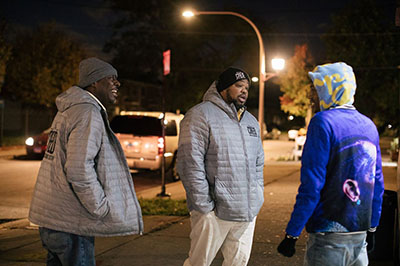Community Policing and Criminal Justice
Community Ideas to Discourage Gun Violence
There were 20,138 firearm deaths that occurred in the United States in 2022, with gun violence disproportionately affecting people of color. In SSM - Qualitative Research in Health, IPR sociologist Andrew Papachristos and his colleagues examine community opinions on local assets that might discourage gun violence. They identified 45 individuals, 33% of them Black, 32% of them White, and 27% of them Hispanic, located in New Haven, Connecticut, who were not directly affected by gun violence, despite having a high likelihood of being involved as a shooter or victim in gun violence. The researchers interviewed them about what social structures they thought could deter gun violence locally. For example, the researchers asked, “Can you provide specific examples of how you and your neighbors have worked to reduce gun violence on your block/street?” From these interviews, the researchers determine that the community members thought that gun violence could be discouraged on interpersonal, neighborhood, and organizational levels by encouraging role models, social cohesion, home ownership, and community-based organizations. The researchers suggest investment in stable housing, efforts to foster social cohesion, access to mental health support, and youth activities to deter gun violence.
Exposure to Gun Violence Among Chicago Community Violence Interventionists
While community-based violence interventions are some of the most important efforts to prevent gun violence, information about violence interventionist workers and their working environment is limited. In a working paper, IPR sociologist Andrew Papachristos and his colleagues study community violence intervention workers in 
Secondary Traumatic Stress Among Community Violence Interventionists in Chicago
Community violence intervention (CVI) programs are a key strategy to preventing violence in the United States, but the risk of harm to those performing anti-violence work has been understudied. In a new study in Preventive Medicine, IPR sociologist Andrew Papachristos and his co-authors investigate the extent to which community violence intervention workers in Chicago experience secondary traumatic stress (STS), or stress that results from helping a traumatized or suffering person. Between March and November 2021, the researchers completed a near census of violence interventionists in Chicago using a researcher-guided survey, the Violence Intervention Worker Study (VIeWS). The participants were asked to rank how often 17 statements on the Secondary Traumatic Stress Scale (STSS) were true over the last seven days, such as “I felt emotionally numb” and “I felt discouraged about the future.” The results show that 94% of workers experienced at least one of the 17 STSS items in the last seven days and 50% experienced nine out of the 17 STSS items. STS was higher for workers who saw someone get shot at while on the job, had gotten shot on the job, or had experienced the death of a client due to violence. The study reveals that community violence interventionists are at high risk for STS and even PTSD. The researchers urge violence intervention organizations to regularly screen for these conditions and offer therapeutic services to workers after traumatic events.
Trends in Gun Violence in Cook County Between 2018–20
In 2020, Chicago had one of the largest annual increases in the number of gun homicides of any U.S. city. In the
American Journal of Public Health, community health scholar and IPR associate Joe Feinglass and his colleagues investigate the rise in gun violence by looking at hospital emergency department (ED) visits by Chicago and suburban Cook County residents for intentional assault gunshots wounds (IGWs). The researchers examine IGW-coded records from the Illinois Hospital Association’s Comparative Health Care and Hospital Data Reporting Services database between January 2018 and December 2020. There were 7,122 hospital IGW-coded visits at 89 Illinois hospitals, and 6.5% resulted in deaths. IGW ED visits doubled over the 36-month study period, and unlike summer spikes in pre-pandemic years, IGW visits continued their 2020 summer spike into the fall and winter months of 2020. ZIP code areas with the largest increases in IGW visits included Chicago South and West Side neighborhoods and a number of Cook County suburbs. IGW ED visits accumulated $342 million in hospital charges and 24,894 inpatient days, although this represents only a fraction of the healthcare costs of many patients’ lifetime disability and the long-term costs of community trauma. Comparing hospital coded records to Chicago Police Department non-fatal gunshot victimization data for the same period indicates that study data are an undercount of IGW injuries. Better data are needed to assist hospital EDs in violence prevention outreach as part of major investments in community development and public safety workforce able to affect gun violence.